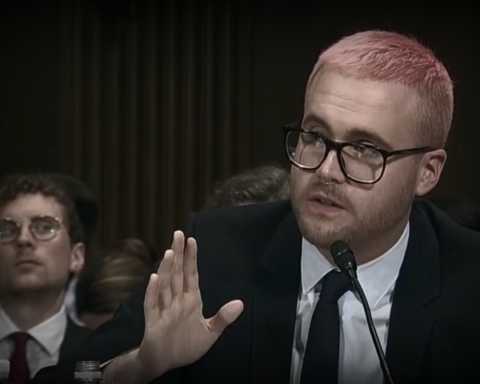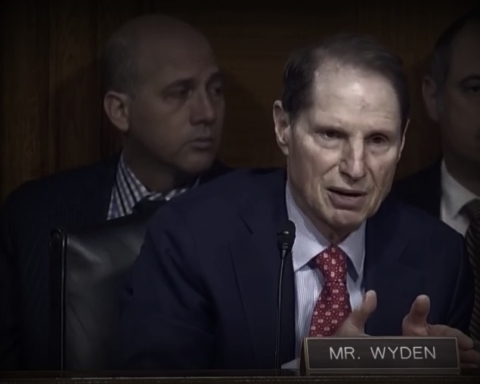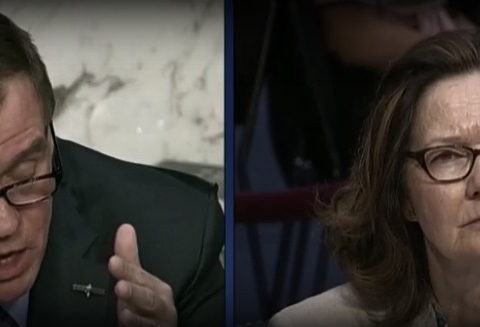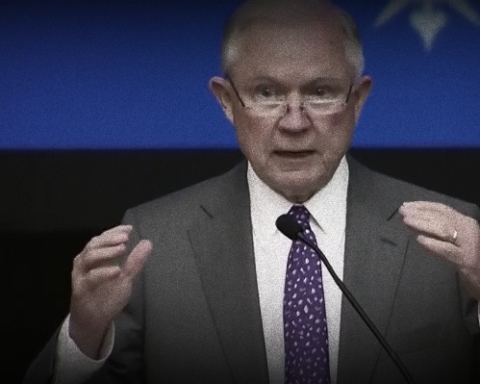The President’s decision to seek a new war resolution from Congress this week is a tacit acknowledgment by the White House that its current justification to fight the Islamic State is on shaky legal ground.
That anxiety became less subtle on Thursday when the administration’s new National Counterterrorism Center Director, Nicholas Rasmussen, contradicted claims made by the administration that current operations against the Islamic State (ISIL) are justified under the 2001 Authorization for Use of Military Force (AUMF).
When asked by Sen. Roy Blunt (R-Mo.) if ISIL is covered under the 2001 AUMF, Rasmussen replied, “I believe not.”
“You believe not?” asked a surprised Sen. Blunt, before prodding, “So how are we engaging with ISIL now in Syria?”
“Let me provide you with an answer for the record,” Rasmussen said, realizing he may have just implicated his boss in illegally launching a war.
Going back to the early days of the bombing campaign in Syria, which began in September 2014, White House officials have consistently cited the 2001 AUMF as the president’ legal underpinning for the airstrikes.
To grease the wheels a bit, the Pentagon’s first targets in Syria were against the mysterious Khorasan group, which officials claimed was an al Qaeda cell specializing in advanced bomb-making. The cell, it was alleged, posed an imminent threat to the United States and was core al Qaeda, and thus a permissible target under the 2001 AUMF.
Eventually, airstrikes against and even discussion about the Khorasan group disappeared, almost as if it never existed in the first place. US airstrikes in Syria then solely focused on defeating the threat of the Islamic State, administration officials said. Still, the White House relied on those 2001 authorities.
In a September 22, 2014 conference call with reporters, a senior administration official claimed, “the President had the authority under the 2001 AUMF to conduct the military operations against both ISIL and the Khorasan Group.”
“[ISIL was] beginning in 2003, known and affiliated directly with Osama bin Laden; they were known as al Qaeda in Iraq for a number of years,” the official said. “We, the United States and coalition partners, used force against al Qaeda in Iraq for a number of years. They were at war with the US. And it was only recently that they split with al Qaeda, but they remain at war and in conflict with the United States.”
But, as Sen. Angus King (I-Maine) noted at Thursday’s intelligence hearing, the 2001 AUMF makes no mention of including organizations that are “affiliated” with al Qaeda or came into existence post-9/11. He was responding to a back-and-forth between Director Rasmussen and Sen. Blunt, in which the former claimed that the 2001 AUMF allowed the president to “carry out operations against al-Qaeda and associated forces,” and Blunt alleged that the law allowed the administration to target “future terrorism against the United States.”
“Actually the term, ‘associated forces’ doesn’t appear anywhere in it. That’s a gloss upon a gloss,” Sen. King said in the hearing. “I think the president has realized that to stretch it into attacking an organization that didn’t’ even exist in 2001, operating in a country that was at least partially stable in 2001, is quite a stretch.”
“I think that’s why we have a new authorization that’s been brought forward to cover the ISIL situation,” he added.
Despite Sen. King’s attempts at clarity, few lawmakers seem to know exactly where one authority to wage war ends, and where a new one would begin. War weary representatives who argue that the outer-limits of the 2001 AUMF were breached long ago, welcome a new authorization, but want it tightly constrained so as not to open the door to another decade-and-a-half of endless global war.
To be sure, there are hawk lawmakers who see this bid for a new AUMF as unnecessarily restrictive, and argue that the 2001 authorization, which doesn’t include an explicit prohibition on “enduring ground forces,” is the right approach. A global war on terrorism, they argue, is something that should be wholly embraced.
While he proposed a new AUMF this week to fight ISIL, the president effectively agrees. Despite prior statements calling for its winding up, he still wants to keep the 2001 AUMF on the books. The mixed signals suggest that the administration is hazy itself on the legal justification for its ongoing war, as evidenced by Director Rasmussen’s recent testimony.
This national security confusion isn’t limited to kinetic operations in Syria and Iraq, either. As The Sentinel reported last week, there were similar contradictory statements made by Pentagon officials about AUMF authorities to indefinitely detain prisoners at Guantanamo Bay.
It’s in this gulf of uncertainty, and not in a clear resolution for war from Congress, that the US military continues waging a global assault against an amorphous enemy loosely defined as being made up of “terrorists.” This offers little recourse for battle-fatigued Americans trying to unwind an indefinite war footing. Pentagon lawyers, whether tired of it or not, will almost certainly find themselves rather busy over the next few years.






